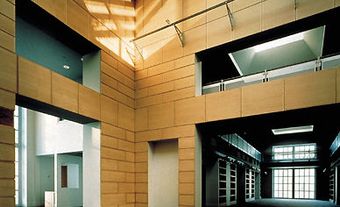Architectural Practice
An architect designs, inspects and certifies the construction of buildings. The process by which buildings are constructed and put into use can be divided into 9 stages, each requiring specific approvals and funding commitments. The stages are as follows: opportunity identification, in which the purpose, nature and scope of the facility is determined and the general location is established; feasibility, in which various options are examined and evaluated, and a site is determined; project definition, in which the requirements of the facility are determined in detail; design development, in which the conceptual design is prepared and further processed into a detailed design; contract documents, during which the detailed working drawings, specifications and form of contract documents are completed; tendering and procurement, in which the contract documents are used to obtain competitive bids from contractors to construct or provide the facility; construction, in which the facility is built; commissioning, in which the facility is turned over from the contractors to the owner's organization, and put into use; and operation and maintenance, in which the owner operates the facility throughout its useful life.The process will vary in complexity and in the length of time it takes to complete the facility. The project may be divided into a number of subprojects, but each of these will roughly follow the stages outlined above. The knowledge and expertise required at each stage also varies. For example, for a small single-family house, one person, such as the architect, can provide almost everything required to complete or co-ordinate each task at each stage. At another scale, a complex facility, such as a large hospital building, would require many experts at various stages, a multidisciplinary team with careful, highly skilled, specialized management and co-ordination.
Buildings are initiated by individual clients or by a group representing a public or private institution or corporate entity. The architect is selected by the client for skills and capability to lead and manage the implementation and for ability as a designer and specialist in design quality control. Architectural firms are able to provide specialized services demanded by clients for particular building types, such as schools, hospitals, office buildings, commercial facilities, recreational facilities, houses of worship and homes.
A typical small architectural practice will have 1 or 2 registered architects, with up to 10 or more assistants who may or may not be fully qualified architects. The principal architects are usually generalists with the experience, knowledge and personal capability to handle all stages of small and medium-sized projects. A large architectural practice will be based on one or more principals, with several senior associates or junior partners, all registered architects. The practice may employ 50-200 architects, technologists or draftspeople. Frequently, large practices will include or organize teams with other professional disciplines, such as structural, mechanical, electrical or civil engineers. They are then able to provide the expertise required for large, complex projects.
The practice of architecture in Canada is controlled by the profession under the terms of provincial legislation. Each province has an association or institute of architects that monitors and regulates practice by controlling the licensing of individual architects through admission requirements and procedures, and by disciplining members who transgress the rules of practice and code of ethics. Only members of the provincial association or institute are allowed to call themselves architects or to practise architecture. The association may prosecute other persons who do so. Individual members of a provincial association may join the Royal Architectural Institute of Canada (RAIC).
To become a registered architect in a provincial association, candidates must have completed education, examination and experience requirements. Educational requirements consist of a professional degree of Bachelor of Architecture, followed by a 3-year internship program of monitored work experience and registration examinations. A candidate may also meet the education requirements by completing the RAIC Syllabus program, which is predominantly a self-study program allowing the candidate to qualify while employed in an architect's office. The Canadian Architectural Certification Board screens and approves the education status of all candidates. Architecture schools in Canada have been established at the following universities: British Columbia, Calgary, Manitoba, Carleton, Laval, McGill, Montréal, Toronto, Waterloo and Dalhousie (formerly the Technical University of Nova Scotia).
Mobility for registered architects is provided for by arrangements for reciprocal recognition of credentials, which may include provisions for special examination (eg, where language or legal systems differ). That mobility has been enhanced with the evolution of the Free Trade Agreement with the US and Mexico, and the gradual move towards shared standards of professional education in architecture and their examination.

 Share on Facebook
Share on Facebook Share on X
Share on X Share by Email
Share by Email Share on Google Classroom
Share on Google Classroom




